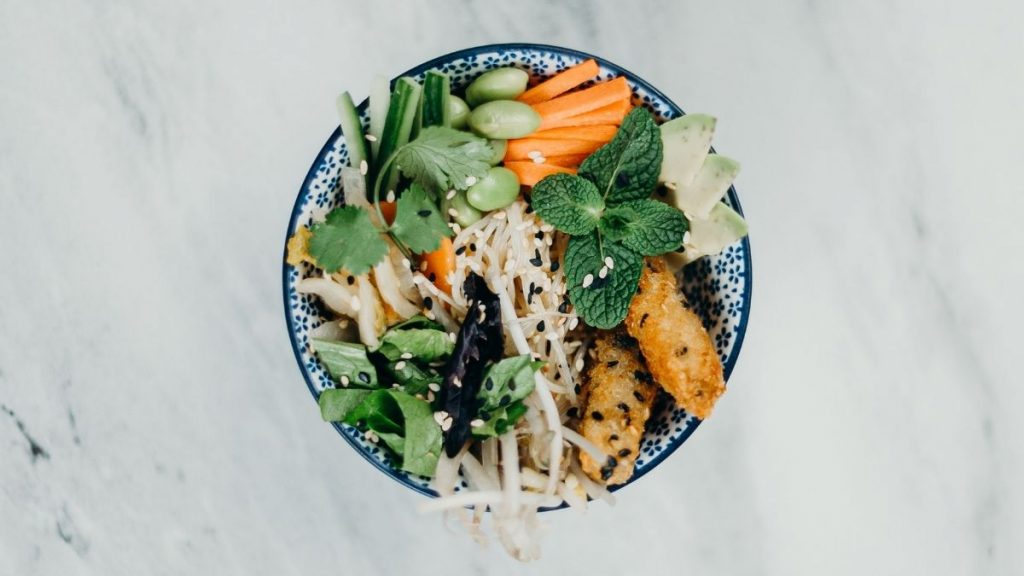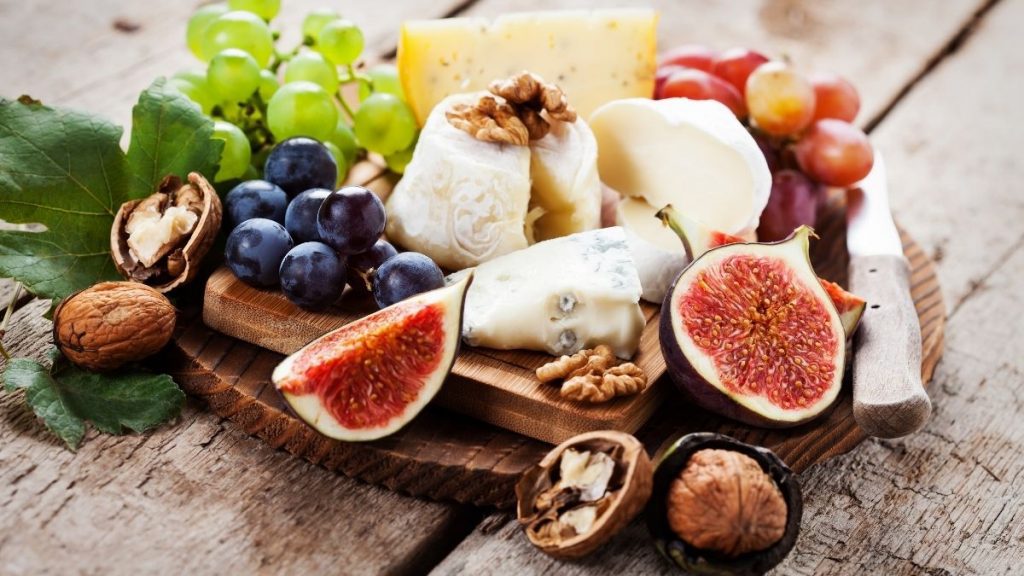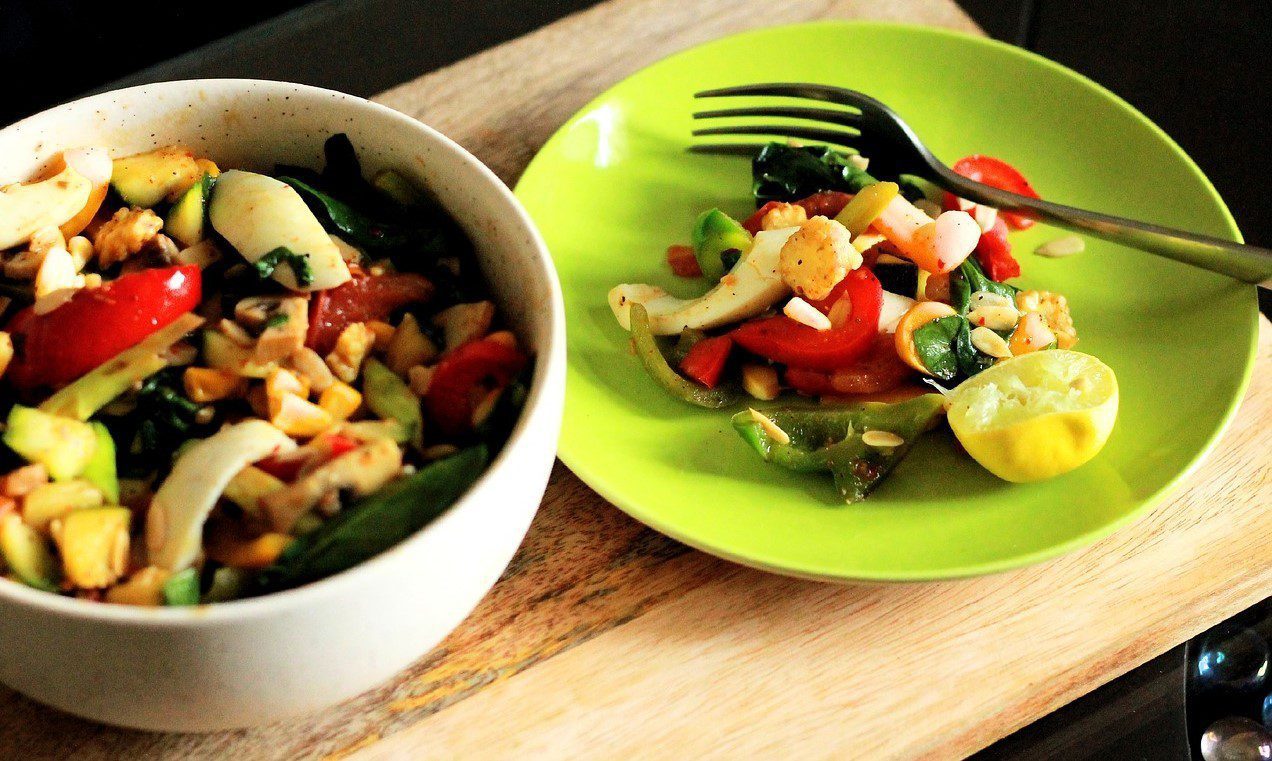
People always say “you are what you eat”, but sometimes what you eat can affect how you feel. If you suffer from arthritis or joint pain, you’re probably tired of well-meaning people telling you to cut out nightshades, “go paleo” or try the latest faddy diet. In this guide we’ll share a few foods believed to ease arthritis pain and joint pain. We’ll also explore the worst foods for joint pain and arthritis – so you can tell the fads from the facts.
Before we start talking red meats, omega-3s and green tea, it’s important to remember that diet and joint pain are a very personal business. What works for one person may not work for everybody. While your best friend’s husband’s co-worker swears by goji berries steeped in apple cider vinegar, this approach may not be quite right for you…
When you begin exploring the best and worst foods for joint pain and arthritis, it’s important to take an experimental approach, keep an open mind, give dietary changes time to have an effect, but most importantly: take care of yourself.
If cutting out all chocolate will make you stressed and sad, for example, try a diet which reduces rather than excludes your favourite treat. Similarly, if a diet is leaving you tired and lacking in energy, it might not be the best option for you. Put yourself first and choose a balanced diet that works around your lifestyle – not a radical, restrictive regime that you simply can’t sustain.
The Difference between Osteoarthritis and Rheumatoid Arthritis
Before we start exploring the best foods for joint pain, here’s a quick recap of the difference between osteoarthritis and rheumatoid arthritis. Knowing which type of arthritis affects you could help you choose treatments, supplements and diets which work for you.
These conditions can both cause similar types of joint pain in the hands, but they affect the rest of the body differently. Rheumatoid arthritis most commonly affects the joints of the hands, feet and ankles. Osteoarthritis typically affects weight-bearing joints such as the hips, neck and knees.
If you suffer from pain in your hands, the location of the discomfort may also be a helpful clue. Osteoarthritis tends to affect the top joints of the fingers, while rheumatoid arthritis usually leaves this joint unscathed. If your pain affects your back, be sure to check out the best foods for back pain here.
How the two conditions work is also different. In osteoarthritis, pain occurs when joint cartilage wears away, leaving bones to rub painfully against each other. The stiffness caused by this condition may be worse first thing in the morning, but typically eases after a short period of movement.
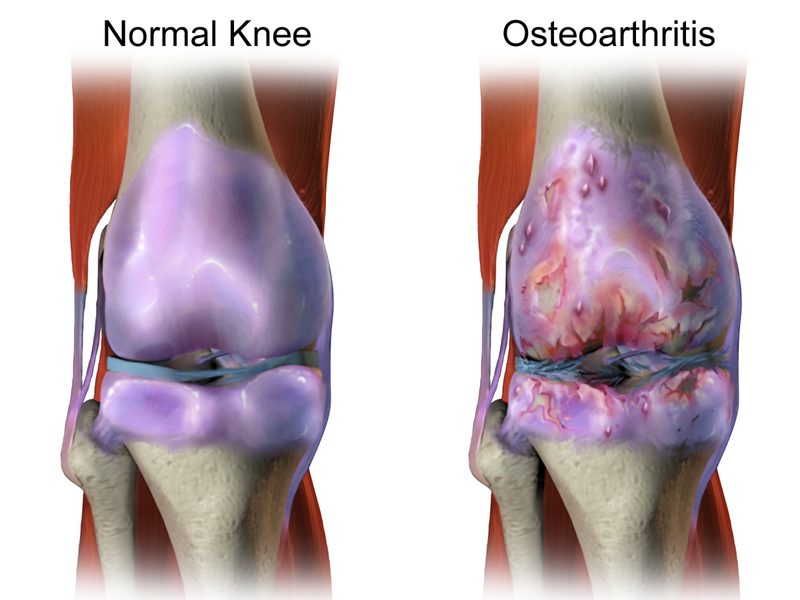
In rheumatoid arthritis, however, stiffness can last much longer and the source of the pain is primarily inflammation. This inflammation causes your immune system to attack the tissues of your joints, resulting in pain and stiffness. Just to complicate things further, bear in mind that sometimes rheumatoid arthritis in a joint can lead to osteoarthritis.
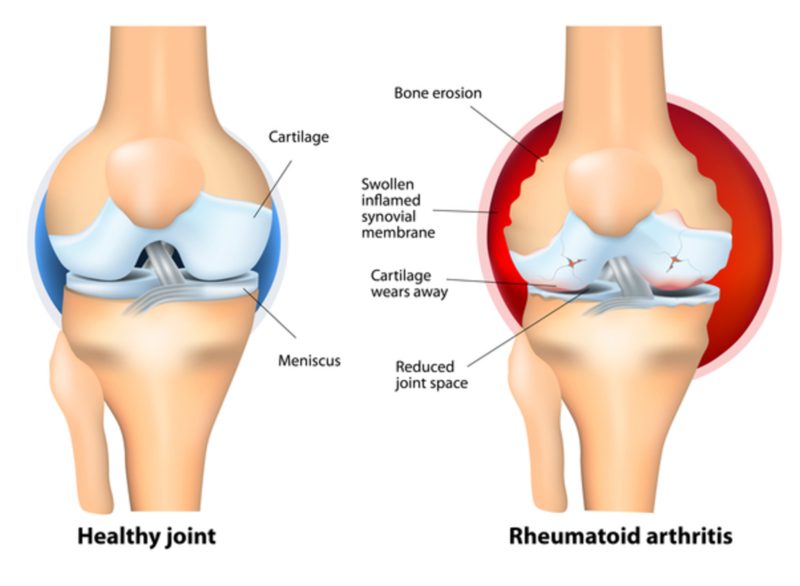
If you experience joint pain, it’s important to consult your doctor to discover the underlying causes and find the correct treatments.
Bad Foods for Arthritis Pain
Let’s talk bad foods. Although osteoarthritis and rheumatoid arthritis are different conditions, avoiding fattening foods can benefit anyone who suffers from joint pain. A balanced diet that does not contain fried, fatty, sugary and processed foods will improve your overall well-being, and help you reduce your weight. Joint pain can worsen when greater weight is placed on the affected joints, so moderating your weight may prove beneficial.
Avoiding inflammatory foods can also reduce pain and stiffness in individuals with both osteoarthritis and rheumatoid arthritis – as well as other conditions worsened by inflammation in the body. Foods containing large amounts of saturated fat, sugar, refined flour, sodium and gluten may all increase inflammation, which can in turn worsen your symptoms.
Cutting down on the following may improve joint pain:
- Fatty foods containing high levels of saturated fat, such as doughnuts and fried food
- High sugar foods including sweets, fizzy drinks, fruit juices, cakes and other baked goods
- Simple carbohydrates can cause blood sugar surges, resulting in inflammation – avoid foods such as pasta, white bread and white rice
- Omega-6 fatty acids are found in foods with high levels of saturated fat, including egg yolks and red meat
Foods to Help Ease Arthritis Pain
Now you know which foods to avoid, it’s time for the more enjoyable part: the foods you can eat! Anti-inflammatory foods are the cornerstone of most diets designed to help painful joints. These foods may help to minimise inflammatory responses in your body, which can prevent flare ups and reduce pain.
Fill up your shopping basket with…
- Omega-3 fatty acids are found in oily fish (like mackerel and salmon), nuts and seeds (such as chia seeds and walnuts) and plant oils (including flaxseed oil and rapeseed oil). This small study suggests that eating oily fish may reduce inflammation.
- Garlic was found to reduce the chance of developing hip osteoarthritis in this study. This flavourful bulb is packed with tonnes of good stuff, which is even believed to improve the function of some immune cells.
- Broccoli may not have been your favourite food as a child, but scientists have found that this vegetable is full of sulforaphane and other healthy components which may reduce the production of key inflammatory markers. Other leafy greens, including spinach, kale and chard, may also be beneficial.
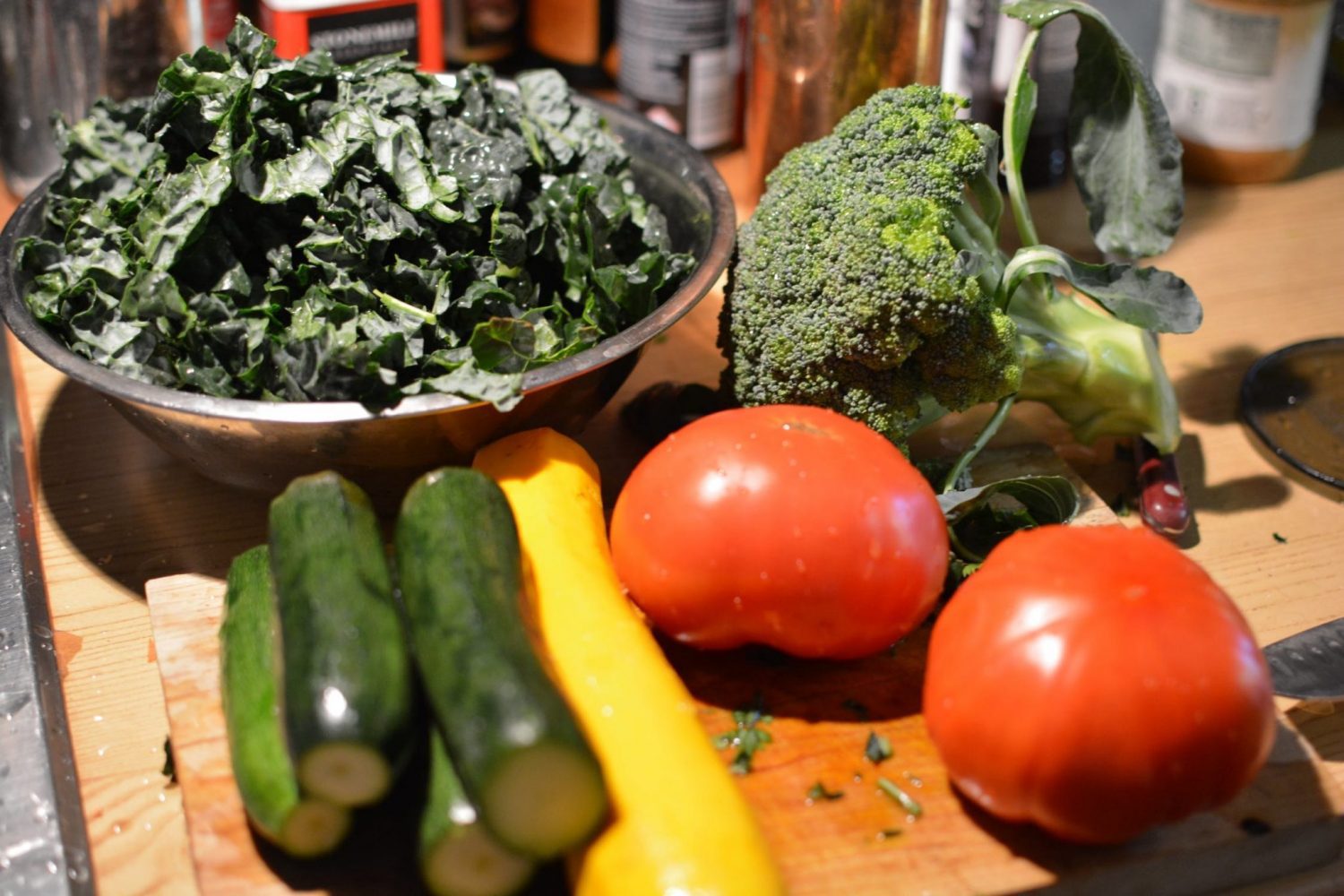
- Berries, including blueberries, blackberries and strawberries, offer a tasty way to introduce antioxidants, rutin and quercetin into your diet. Studies have found that a berry-rich diet could reduce your inflammatory markers.
- Grapes are packed with antioxidant and anti-inflammatory goodness, including resveratrol and proanthocyanidin. Tests in labs (not yet trialled on humans) show that these components may have a beneficial effect on arthritis.
- Ginger was found to improve knee pain caused by osteoarthritis in 63% of study participants. Brew this pungent ingredient in tea, or add it to curries and stir frys.
- Even more good stuff: Sour cherry juice, green tea, dark chocolate, turmeric, cinnamon and even a small amount of red wine are all believed to have anti-inflammatory properties. These ingredients are widely recommended as being helpful in diets that reduce joint pain.
Recommended Recipe
This lime and ginger salmon recipe from BBC Good Food is the perfect tasty dinner with powerful anti-inflammatory ingredients. Ginger and garlic pack a punch of flavour and antioxidants, fresh salmon gives the benefit of omega-3 fatty acids, while stir-fried broccoli and pak choi provide all the goodness that leafy greens can offer.
Ingredients
juice 2 limes
thumb-sized piece ginger, grated
2 garlic cloves, crushed
2 tsp low-sodium soy sauce
2 tbsp rice wine vinegar
2 skinless salmon fillets
100ml low-sodium chicken stock
140g pack baby corn, halved
175g thin-stemmed broccoli
4 baby pak choi, halved
small bunch spring onions, sliced
Method
- Mix the lime juice, ginger, garlic, soy and vinegar with some black pepper. Pour half over the salmon fillets and leave to marinate for 10 mins.
- Heat the grill to High. Lay the salmon on a non-stick baking tray and grill for 5-6 mins each side or until cooked through. Meanwhile, heat a wok with the remaining marinade and the stock, add the baby corn and broccoli, stir-fry for about 5 mins, then add the pak choi and cook for 2 mins more.
- Serve the salmon on top of the vegetables with any sauce from the pan and sprinkle with the spring onions.
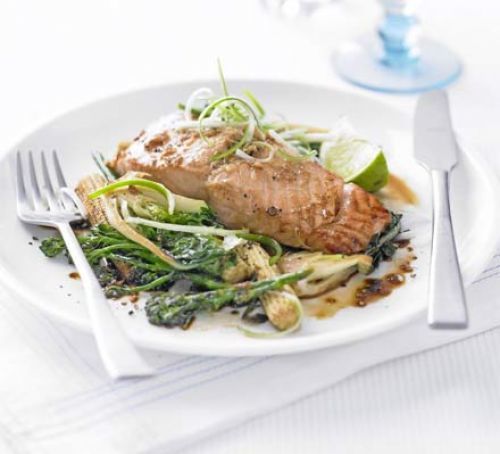
Over to You!
Have you tried excluding or including any of the foods we’ve suggested? Perhaps you have a great recipe or meal plan for people with joint pain? We’d love you to tell us your story, or share your anti-inflammatory diet tips with other readers.


